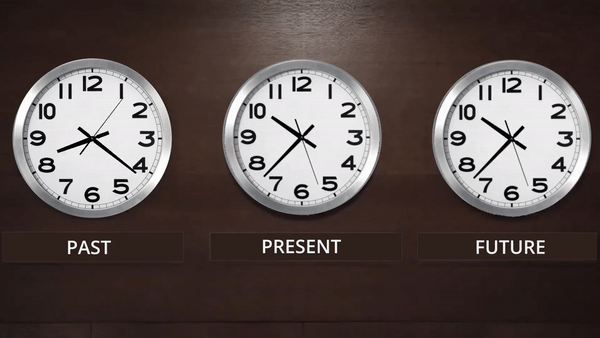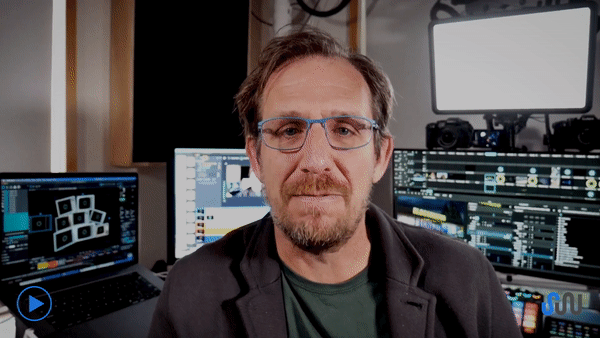
So far this year, I’ve had at least three different clients tell me that they want help to future-proof their organisation. And as proactive and exciting as this may sound, it’s also something that is entirely unachievable and, to be honest, not even that desirable. Once again, this article is a little long, so if you want the summary, it’s this:
- It’s impossible to prove proof
- Future-proofing would lead to irrelevance
- We’re already future-resistant (and that’s not necessarily a good thing)
- So, if not future-proof, then future ‘what’?
- A future ‘anything’ ain’t easy
1. It’s impossible to prove proof
Waterproof watches were once all the rage. In fact, it wasn’t just waterproofness; manufacturers would claim every imaginable type of proofness, dustproof, shockproof, and even magnetic proof. But in the 1960s, because watchmakers were making increasingly outlandish claims and couldn’t provide proof of this proofness, the United States Federal Trade Commission cracked down on what it considered to be misleading advertising.
“You keep using that word [waterproof]. I do not think it means what you think it means.”– The Federal Trade Commission, 1960
Since then, watch manufacturers have shifted verbiage. Watches are no longer advertised as waterproof; they are water-resistant. Importantly, these claims are also not absolute; they come with clearly stated limitations as to what depth and what activities they can be used for*. This is because as the depth increases and the pressure on the outside builds, the ability to maintain water resistance gets harder. Parts of the watch, such as the seals or even the glass, will eventually ‘crack under pressure’ and fail.
In fact, the extent of these limitations might surprise you. You might think a watch rated to 10m might be suitable for swimming, but that only makes it splash-proof. And to go jet skiing, you need a watch rated to 200m water depth…even though you stay on the surface.
Even the ridiculously named Omega Seamaster Planet Ocean Ultra Deep, which was strapped to the robotic arm of an underwater submersible and sent to the bottom of the Mariana Trench, a depth of over 10,900 meters, is not marketed as being waterproof.
2. Future-proofing would lead to irrelevance
So, if it is no longer considered realistic to claim something is waterproof, should we stop claiming things can be made future-proof as well? Well, clearly the answer is yes, but the misleading nature of the term is only a small part of the problem. The big part of the problem is that future-proof is not even something organisations should be striving for.
If an organisation could be made genuinely future-proof, this would mean it has been designed in such a way that the future could never get in. That no matter how much pressure the future exerted on the outside of the organisation, the inside would stay exactly the same. Calmly ticking along, doing the same old thing in the same old way.
On one hand, this might sound far more enjoyable than people’s current experience of work (kind of like being wrapped up in a warm blanket by the fire as the storm rages outside), but in reality, it’s actually a recipe for the rapid onset of irrelevance. Organizations don’t succeed because they avoid change; they succeed because they respond effectively to it. Unlike a watch, an organization should never be static; it is an organism that operates within an ecosystem. Its very survival necessitates a flow of energy, resources, and ideas both into it and then back out again.
At the end of the day, for an organisation to survive in the future, it must also be part of the future. The two things can’t be separated.
3. We’re already future-resistant (and that’s not necessarily a good thing).
Should the Federal Trade Commission start cracking down on unscrupulous consultants flogging future-proofing services, perhaps we will see a shift towards future resistance. Unfortunately, there are two clear problems with future resistance as an objective. The first of which is “future-resistant” makes it sound like an organisation is trying to avoid the future rather than embrace it. The second problem is avoiding the future is already standard practice for a whole lot of organisations.
That being said, at least with a shift towards marketing future resistance we might also see a few disclaimers thrown in, perhaps “Future-resistant…but only out to 2027” or “Resistant to light splashes of the future but full immersion will void your warranty.”
4. So if not future-proof, then future “what”?
I would argue that instead of proofing against the future and attempting to block it out, we actually need to speed up our adaptation to the future by letting it in. Organisations don’t need more future-proofing, they need to grow their future focus.
Every leader has the choice as to where to focus their time, energy, and attention. They can focus on the past – what we’ve previously achieved, last quarter’s results, and our proven products and ideas. They can focus on the present – improving productivity, current projects, and even organisational culture. Or they can focus on the future – how things are changing, emerging opportunities, new challenges, and our ability to adapt.
It’s not that leaders need to do one of these; they need to do all of them, but the proportion of time they spend on each needs to shift based on current conditions. In times of stability, the past can often be a reliable predictor of the future. As such, in a stable environment, a strong focus on the past and present makes sense. But in times of uncertainty, the past becomes a far less reliable predictor, and we need to put more time and energy into understanding emerging trends and exploring new strategic options.
5. A future ‘anything’ ain’t easy
The problem with two-word catchphrases is that they sound simple, even when they’re actually quite challenging. Just like crafting a water-resistant Omega Seamaster Planet Ocean Ultra Deep, which requires encasing a self-winding movement with Co-Axial escapement in a carved block of solid titanium and covering it with an Edge-defined Film-fed Growth sapphire crystal display (or so I’ve been told), creating a future-focused organisation also takes a fair bit of work.
Unlike the past, which is fixed and knowable, the future is messy and undetermined. The management and leadership styles that work effectively in one domain don’t necessarily translate well into the other. Developing a future focus requires committing time and resources to exploring possibilities and imagining diverse outcomes. It requires leaders to accept the tension of ‘unknowing’ and resist the desire for certainty (because as soon as we collapse all possible futures into a single prediction, the only thing we can be certain about is that our prediction will certainly be wrong).
This may sound highly unproductive, and to be honest, who has the time to do all that when you can’t get to the bottom of your email inboxes and there’s a full calendar in front of you? But in unpredictable times, productivity could actually be your downfall. Productivity requires specialisation and a single-minded focus on doing a few things well, but this, in turn, creates rigidity. And business history is littered with stories of highly successful organisations that failed to see the future coming because they were rigidly focused on the successes of the past.
Shifting to a future focus requires a systemic change in how organisations are managed and led*. But you don’t get systemic change without first creating the conditions for it, and this doesn’t happen in a one-hour keynote or a half-day workshop. Systemic change requires resourcing, a commitment to new structures, the development of new processes, and a culture that supports ongoing learning and change.
*For an example of this, it’s worth taking a look at this Financial Times article on how IKEA has shifted to using scenarios as an integral part of its planning and management approach.
So in closing (this post ultimately has to end somewhere), beware of charlatans selling quick fixes to systemic issues. They may tell you what you want to hear, but it’s unlikely to be what you genuinely need, and it can also mislead us into believing something complex and challenging is simple and easy. But as Carl Sagan so eloquently put it, “Extinction is the rule. Survival is the exception.” So take heart in the fact that although the effort required to develop a future-focused organisation is high, so are the stakes you’re playing for.






